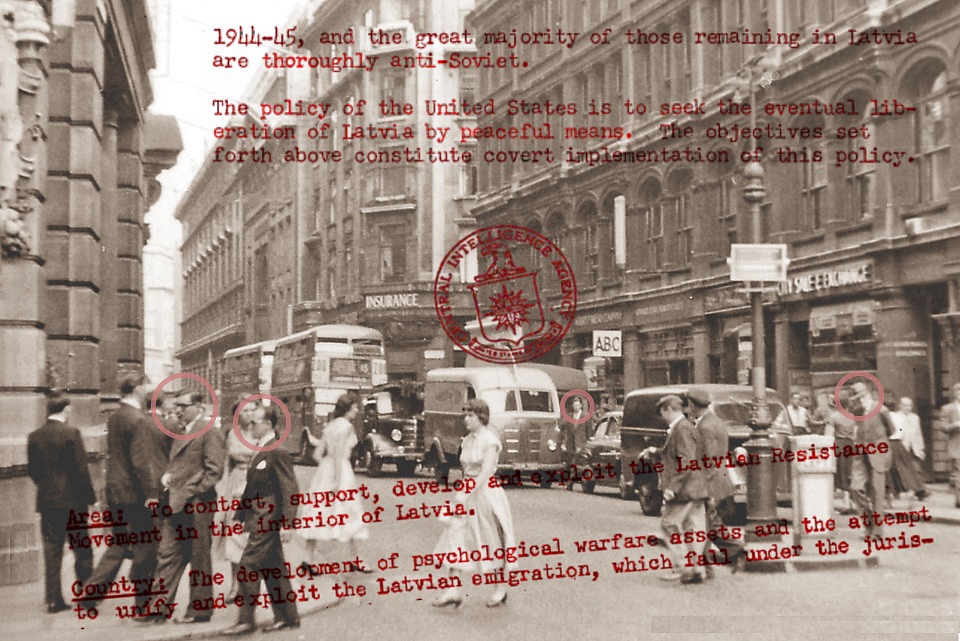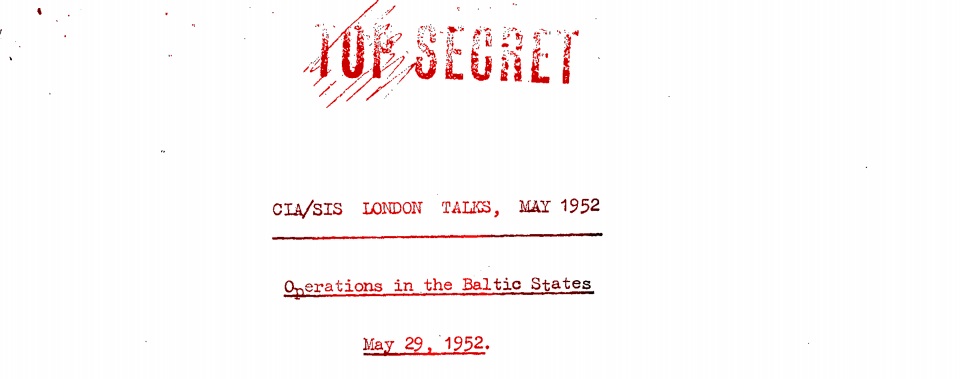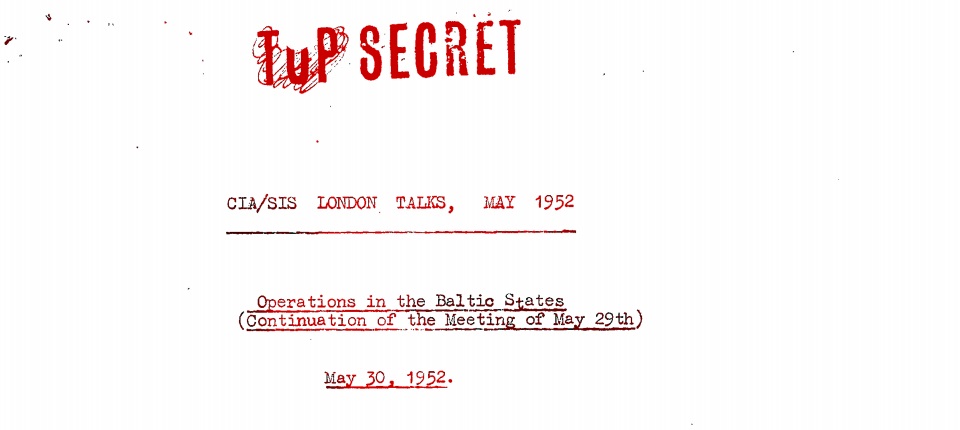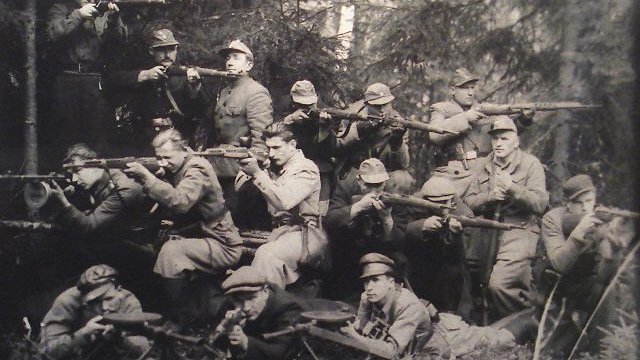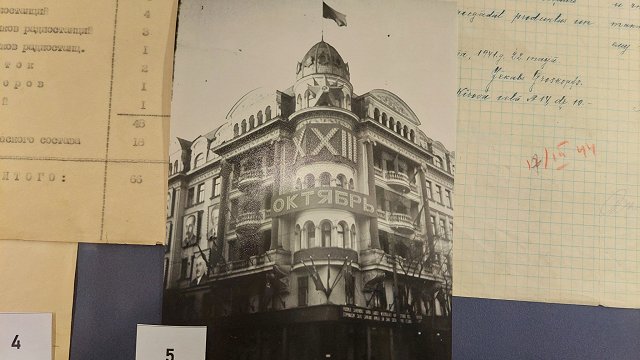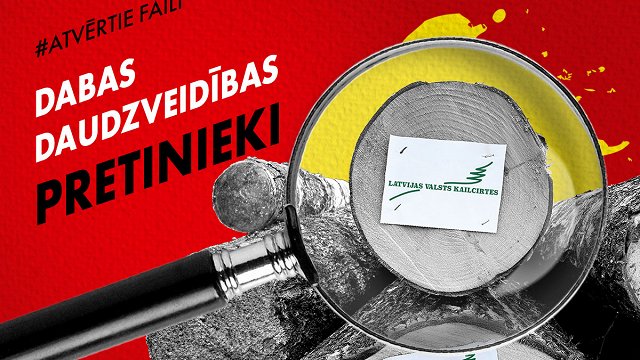Part of these documents of the 40s and 50s could be described as having a rather generic analytical character, while some feature reports or retold reports of the agents.
What follows is a series of spring 1952 reports, retrieved by LSM's Russian-language service. They detail how the CIA and the UK's SIS, aka MI6, divided areas of influence in working with the 'forest brothers'.
Both secret services lead independent operations in Latvia, but conflict broke out as the US side had to delay an operation following protests by the MI6.
The CIA and MI6 then compared notes in London without however involving the Swedish Security Service which also had interests in Latvia. All the names and references to people have been blanked out.
1. Monthly project status report, April 1952
The report describes how CIA plans to drop agents into Latvia's Kurzeme region were thwarted by
"We informed the SIS of our proposed drop zone operations in Kurzeme, Latvia. Upon receipt of this information the British replied immediately by a cable protesting our selection of DZ areas in the Kurzeme peninsula stating that such an operation would endanger the SIS assets in this area, that SIS was. in contact with partisans in Kurzeme and had adequate intelligence and operational coverage of this part of Latvia. The British further requested that we postpone the AECOB operation until fall 1952 at which time they offered to arrange for the reception and further movement of our agent personnel in Latvia."
"In view of the above described conflicting interests with the SIS ... it was reluctantly decided to postpone the AECOB operation to fall 1952."
Another short report, dated May 1952, states that there has been no significant activity during May and that agents are being reassessed for their fitness for a fall operation.
"The British have informed us that during this month they have infiltrated 2 agents into Latvia and exfiltrated one.
2. CIA/SIS London talks, May 1952. Operations in the Baltic States May 29, 1952.
The document details talks held between CIA and MI6 in London.
"SIS defined their interest in maintaining contact with the resistance movement in LATVIA. They explained that they had found from experience that single agents, living semi-legal lives in the Baltic States, were not able to develop intelligence gathering networks. They felt that the best way to cover the limited intelligence requirements in LATVIA was by encouraging the resistance organisation to brief its contacts among the legally living population to obtain the intelligence and pass it back through the illegal groups with whom SIS was in contact. They had briefed their recently infiltrated Latvians to this effect. SIS were further interested in building up the resistance group, whose energies were at present fully occupied in maintaining the security of its organisation, so that it could go over to more offensive tasks, penetration of the administration etc. It was also hoped that this resistance organisation would provide the jumping off point for agents to more important targets in the East, it was however clear that only Baltic personnel could be dispatched by this means.
SIS felt that for the present its interests in LATVIA were adequately covered by the agents whom they had already infiltrated. Their plans therefore were directed to maintaining these agents. This did not mean that the introduction of an independent party by CIA could not provide a valuable contribution.
3. SIS felt that operations into LATVIA were greatly facilitated by the non-political atmosphere prevailing in the Latvian emigre community. They wished that the Lithuanians might be prevailed upon to benefit, from this good example.
4. The situation in LITHUANIA: CIA said that they had again heard from their agent, but that although they did not consider it likely that he was Soviet controlled, they were discounting his use in future operations. SIS reported that they had recently exfiltrated a Lithuanian from the BDPS [Lithuania's United Democratic Resistance Movement] group of whose bona fides they had at present no doubts. He had brought out signed credentials, both from the head of the BDPS and letters from their own agents. The general situation in LITHUANIA was becoming ever more difficult, Sovietisation was being accelerated by the indoctrination of youth, dispersal of the Lithuanian population and the apparent hopelessness of the cause of independence. It was agreed to discuss the problem of the future fate of the thousand odd partisans who had so far survived. Documents and. jobs might be procured for them by the BDPS, but funds were at present lacking. The difference in the situation of the partisans in LATVIA and LITHUANIA could be explained by the fact that in LATVIA the partisans were withdrawn from active demonstrations about two years ago.
SIS felt that their interests in LITHUANIA wee covered in much the same may as in LATVIA; there was no great intelligence target, and they were exploring the dispatch of Lithuanians to targets further East. It might be advantageous to establish contact with other branches of the BDPS or indeed other resistance groups in LITHUANIA of whose existence BDPS had informed them.
5. The situation in ESTONIA: SIS stated that they had as yet insufficient coverage in ESTONIA. Their single agent was still living illegally, although he was working to establish contact with the leading personalities of the local resistance movement and to move into a town. They had very little information on the local resistance movement. Inasmuch as ESTONIA was more favorably situated geographically for intelligence targets further afield they were anxious to build up contact with this area. CIA agreed and said that they hoped to send a party in possibly in the spring of 1953.
6. It was agreed to discuss the establishment of a mechanism for guaranteeing the effective running of CIA and SIS operations to the Baltic States in 1953.
CIA/SIS London talks, May 1952. Operations in the Baltic States May 29, 1952. Operations in the Baltic States (Continuation of the Meeting of May 29th)
The document outlines plans by the CIA and MI6 over Latvia and Lithuania.
"1. It was agreed that CIA should carry out their operation into LATVIA without making use of British resources for reception, but that comparison of notes on the details will be arranged between CIA and KS Case Officers by the 20th June.
2. It was agreed that CIA/SIS would consider mounting a test joint operation - possibly in LITHUANIA - in the spring of 1953. SIS proposals for this operation will be submitted shortly to CIA, WASHINGTON. Other independent operational plans for 1952 and 1953 will be fully co-ordinated.
3. In exchanging views on the most secure and efficient mechanism for running operations into the Baltic States, it was agreed to examine the establishment of a joint operations section. SIS will put their ideas on this subject on paper and forward them to CIA, WASHINGTON.
4. In discussing the present dilemma of the partisans in LITHUANIA it was agreed that both services should give further thought to a possible solution of it." [..]
